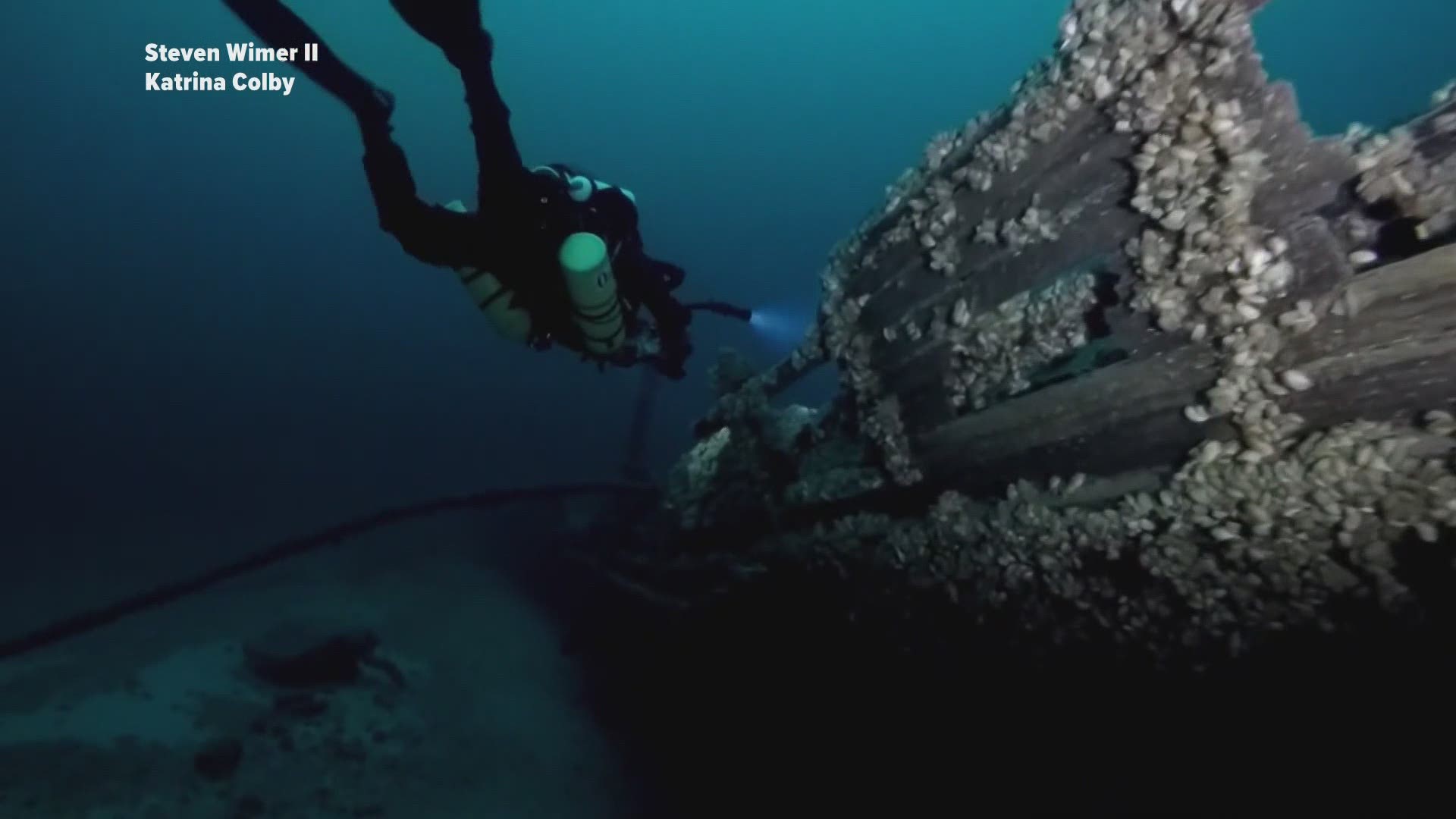SOUTH HAVEN, Mich. — According to the Michigan Shipwreck Research Association (MSRA), over the course of the last 200 years, some 500 ships became total losses along the west coast of Michigan, and only about 20 of those wrecks still exist.
"And only a handful of those are near publicly accessible beaches where non-divers can see and learn from them," said Valerie van Heest, MSRA Director.
One of those accessible shipwrecks is the City of Green Bay schooner, which sank off the coast of South Haven on Oct. 1, 1887.
"Many people have flocked to the beach because it was so easy to see the wreck in about five feet of water," van Heest said. "Its bones had remained lodged in a sand bar just north of the Deerlick Creek outlet, which is located three miles south of the South Haven channel."
For 134 years, the wreck site was a staple of public curiosity, until sometime in either late 2020 or early 2021, when the ship decided to set sail once again.
In May 2021, a South Haven resident who owns a home overlooking Lake Michigan saw what appeared to be the remains of a shipwreck 50 feet off shore in front of her house.
The resident, who wishes to remain anonymous, paid a visit to the Michigan Maritime Museum where she reported her discovery.
"She told us she'd lived on the property for 40 years and they hadn't seen anything [like that before]," said Ashley Deming, director of education and administration for the Michigan Maritime Museum. "We have people report potential shipwrecks that they have found all the time, but in this particular instance, it was in an area we didn't know about."
The Maritime Museum is a collaborative partner with the MSRA, so Deming immediately called Valerie van Heest, alerting her to the discovery, and to see if her team could make a site visit to investigate.
"Every few years, we see erosion and big storms and sometimes new wrecks reveal themselves," van Heest said. "When I talked to the homeowner, she said she was very aware, as everyone in South Haven is, that the City of Green Bay wreck is off Deerlick Creek Beach."
Van Heest, who, along with her MSRA crew, surveyed the City of Green Bay shipwreck 15 years ago, says she'd know it if she saw it because, "It's a very distinct piece of wreckage."


Van Heest says as soon as she arrived at the woman's home, looked over the bluff, and saw submerged shipwreck remains, she knew it was the City of Green Bay.
In late September 1887, the City of Green Bay, along with another schooner, the Havanna, were both loaded up with a cargo of iron ore then departed Escanaba, Mich., for Chicago. On Sunday, Oct. 1, a storm developed, blowing the two ships far off their course.
At daybreak Monday, several people living along the lakeshore north of South Haven spotted a schooner flying a signal of distress as it drifted rapidly southward. South Haven's life-saving crew responded as quickly as they could hoping to render aid to the ship and its crew.
The storm, which hadn't let up, forced the City of Green Bay to plow bow first into a sandbar. The life-saving crew encountered endless trouble with the rescue operation, while the pounding waves were washing sand from under the stern until the heavy weight caused the ship to break in two.
Two masts collapsed, carrying away three of the sailors, who where never recovered. The life-saving crew saw three crewmembers clinging to the one remaining standing mast, but could not get to them before the waves began breaking apart the vessel.
Of the City of Green Bay's six crewmembers, five of them lost their lives in the tragedy.
Nearly 134 years later, van Heest strongly believes that a similar storm helped the schooner enjoy another voyage.
"Mother nature had her way with this ship again," said van Heest. "Erosion, combined with a big storm, somehow lifted this ship from where it was embedded for over a hundred years, and moved it south."
The brittle bones of the City of Green Bay, which are 80 feet long and 25 feet wide, floated from the spot where it foundered along Deerlick Creek Beach to its new resting place, which is on a private, rocky beach about a half mile south.
While a member of the MSRA crew captured some drone footage of the ship's new resting place, van Heest ventured into the lake to survey the situation.
"The remains now don't seem so embedded in the bottom," van Heest said. "I would not be surprised to hear that after another big storm, it's no longer here."
Very few sunken ships get to sail again, but it appears the City of Green Bay is in the mood to change the paradigm.
"We'll keep an eye on this," van Heest said. "If it moves again, we'll go out and try to find its next resting place."
Related video:
►Make it easy to keep up to date with more stories like this. Download the 13 ON YOUR SIDE app now.
Have a news tip? Email news@13onyourside.com, visit our Facebook page or Twitter. Subscribe to our YouTube channel.


